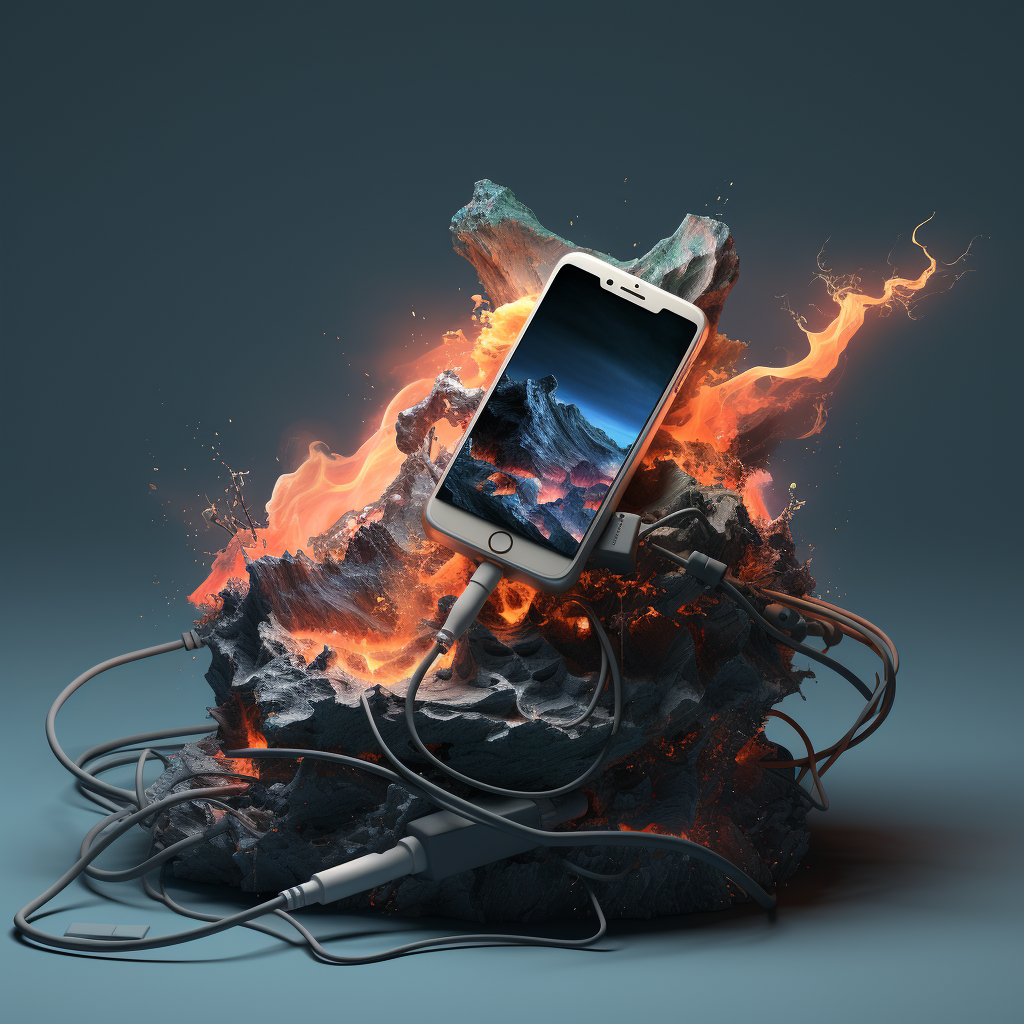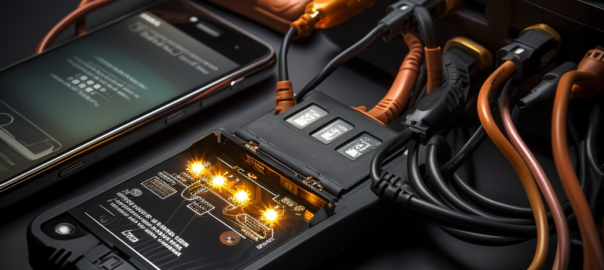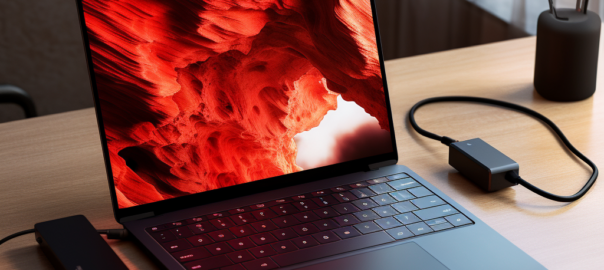With the rapid evolution of smartphones comes an equally dynamic landscape of charging technologies. The charger you use significantly influences how quickly your phone regains its battery life and even the longevity of the battery itself. Hence, understanding the wattage of your phone charger is more than just trivia—it’s essential knowledge for anyone relying on a mobile device.
In this comprehensive guide, we delve into the intricacies of electrical power and its role in phone charging. By the end, you’ll grasp the true importance of charger wattages and how they impact your day-to-day life. This knowledge allows you to make informed decisions when choosing a charger, maximizing both speed and battery health.
Join us as we explore the varying wattages of phone chargers across different brands, the marvel of fast charging technology, and tips for making an informed purchase. Along the way, we’ll answer some of the most frequently asked questions about this subject, providing you with the expertise to navigate this seemingly complex topic.
Contents
- 1 Understanding Electrical Power: What Are Watts?
- 2 The Evolution of Phone Chargers
- 3 USB, Lightning, and Other Connectors: How They Influence Power Output
- 4 Popular Smartphone Brands and Their Typical Charger Wattages
- 5 Fast Charging Technology: How Does It Work?
- 6 Impact on Battery Health: Is Faster Always Better?
- 7 Making an Informed Choice: Tips for Selecting the Right Charger
- 8 Conclusion: Powering Your Life Smartly
- 9 FAQs
Understanding Electrical Power: What Are Watts?
Before we dive into the wattages specific to phone chargers, it’s crucial to understand what “wattage” fundamentally means. The watt (W) is the unit of electrical power, named after Scottish engineer James Watt. This unit is used to quantify the rate at which energy is used or produced.
Voltage, Current, and Power
Electrical power is a result of two factors: voltage (V) and current (A). The relationship between these variables can be summed up with the simple formula:
Power (Watts)=Voltage (Volts)×Current (Amperes)
For example, a typical smartphone charger might offer 5V of voltage and 2A of current, leading to a power output of 10W.
AC vs. DC Power
Another vital distinction is between Alternating Current (AC) and Direct Current (DC). AC is what comes from your wall outlet, while DC is what your devices use. A phone charger acts as a converter between these two types of electrical flow. This conversion is also a factor in the overall efficiency of your charger.
The Role of Resistance
The last variable to consider is resistance, measured in ohms (Ω). Resistance can affect how efficiently electricity flows from your charger to your phone. Higher resistance generally means slower charging, while lower resistance allows for more efficient power transfer.
By understanding these fundamental principles, you’re better equipped to appreciate the nuances of different charger wattages. Not all watts are created equal, and your charger’s efficiency plays a significant role in how quickly and safely your phone regains its battery life.

The Evolution of Phone Chargers
From the bulky, slow chargers of early mobile phones to today’s sleek, fast-charging powerhouses, phone chargers have seen a remarkable evolution over the years. Understanding this history provides context for the various wattages available today.
The Early Days: Low Wattage and Slow Charging
In the late ’90s and early 2000s, mobile phone chargers were often less than 5 watts. Battery capacities were also smaller, but these chargers took a considerable amount of time to recharge a phone fully.
The Rise of the USB Standard
The introduction of the Universal Serial Bus (USB) standard was a game-changer. Initially used primarily for data transfer, USB soon became the go-to interface for charging as well. The original USB 1.0 offered 2.5W of power, while USB 2.0 increased this to 4.5W.
USB-C and Fast Charging
With the introduction of USB-C, the power capabilities took a significant leap forward. USB-C can theoretically deliver up to 100W of power, although most phone chargers use far less. Nowadays, it’s common to see phone chargers ranging from 18W to 65W, enabling incredibly fast charging times.
Proprietary Charging Technologies
Some manufacturers have developed their own fast-charging technologies, often exceeding standard USB-C capabilities. For instance, OnePlus’s Warp Charge 65 promises to charge compatible phones to 58% in just 15 minutes, utilizing a 65W charger.
The Advent of Wireless Charging
Wireless chargers have also made strides, although their wattages are generally lower than wired solutions. The Qi standard, the most popular wireless charging technology, can deliver up to 15W, although many devices limit this to 5W or 10W for safety and longevity reasons.
By grasping the historical context of phone charger evolution, you can better appreciate the range of wattages available today. Different chargers are tailored to different needs, and what may be a blazing-fast charger today could become outdated in just a few years.
USB, Lightning, and Other Connectors: How They Influence Power Output
Connectors are more than just the physical ends that plug into your phone and the power source; they significantly influence the wattage your charger can deliver. Here, we will break down the most common types of connectors and how they correlate with power output.
USB-A
USB-A is the classic, rectangular-shaped USB port that’s ubiquitous in older computers and various consumer electronics. While convenient and widespread, it’s limited in its power delivery. Standard USB-A ports generally offer up to 12W of power, sufficient for slow-to-moderate charging speeds.
USB-C
USB-C is the small, reversible connector that’s becoming a standard for modern devices. Not only can it transfer data more quickly than USB-A, but it also supports significantly higher power levels—up to 100W under the USB Power Delivery (PD) standard. This makes it ideal for fast charging, provided both the charger and phone support it.
Lightning
Exclusive to Apple devices, the Lightning connector is a proprietary technology with an 8-pin design. While it doesn’t offer the same high wattages as USB-C, it’s still capable of delivering a respectable 18W to 20W when using the right power adapter.
Micro-USB
This connector was once common in Android smartphones but is becoming increasingly rare in newer models. While generally similar to USB-A in terms of power delivery, it’s less versatile and has been largely supplanted by USB-C.
Proprietary Connectors
Some manufacturers use their own, specialized connectors to deliver fast charging speeds that exceed standard specifications. For example, some of OnePlus’s earlier models used the Dash Charge system, relying on a proprietary cable and adapter to deliver speeds of up to 20W.
Compatibility Is Key
It’s essential to note that both the phone and the charger must support the same standards for you to take advantage of higher wattages. If one of the devices does not support fast charging, the system will default to the lowest common denominator.
Understanding the types of connectors and their limitations can help you make an informed decision when choosing a charger. Your choice will depend on your specific needs, whether it’s maximum speed, versatility, or something else entirely.
Popular Smartphone Brands and Their Typical Charger Wattages
Each smartphone brand has its own approach to charging technology, and understanding these differences is key when seeking a charger that’s compatible with your device. Below, we examine some popular brands and the typical wattages of their chargers.
Apple iPhone
Apple’s iPhones generally have modest charging needs compared to some Android devices. The iPhone 11 and earlier models came with a 5W charger, but newer models like the iPhone 12 and 13 can utilize up to a 20W charger for faster charging. However, it’s worth noting that Apple no longer includes a charger in the box, so you’ll need to purchase one separately if you don’t already have one.
Samsung Galaxy
Samsung has embraced fast charging quite aggressively. Most recent Galaxy devices support at least 25W charging, and the Galaxy S21 Ultra can utilize up to 45W. Samsung also includes a 25W charger in the box, which provides a reasonable balance between speed and battery health.
OnePlus
OnePlus is known for its Warp Charge technology, allowing incredibly fast charging speeds. The OnePlus 9, for example, comes with a 65W charger that can get the phone from 1% to 100% in about 29 minutes. It’s a standout feature for those who want their phones charged as quickly as possible.
Google Pixel
Google’s Pixel phones have been more conservative in their charging technology. The Pixel 5, for instance, comes with an 18W USB-C charger. However, the Pixel 6 series introduced 30W charging, a noticeable bump in speed.
Xiaomi
Xiaomi has also been pushing the envelope with high-wattage chargers. Their Mi 11 Ultra supports 67W wired charging, which is among the fastest you’ll find in a mainstream phone today.
Huawei
Huawei’s SuperCharge technology is another contender in the fast-charging arena. Recent Huawei models like the P40 Pro support up to 40W charging, offering a full charge in less than an hour.
Understanding the charging capabilities of different brands allows you to make an informed decision, ensuring you’re not short-changing your device’s charging potential. Remember, using a higher-wattage charger than your phone can handle won’t speed up the process; it will simply default to the highest wattage that the phone can accept.
Fast Charging Technology: How Does It Work?
Fast charging has become a crucial selling point for modern smartphones. But how does this technology achieve such impressive charging speeds? Understanding the underlying mechanics can help you choose a charger that aligns with your specific needs.
Basics of Fast Charging
Fast charging doesn’t merely imply a high-wattage charger; it’s a combination of software and hardware optimizations that enable quicker energy transfer. Typically, fast charging technologies either increase the current or adjust the voltage dynamically to allow more power to flow into the battery.
Types of Fast Charging
Here’s a quick look at some popular fast charging technologies:
- Qualcomm Quick Charge: This widely-used method focuses on increasing the voltage rather than the current, allowing devices to reach up to 18W or even higher for compatible devices.
- USB Power Delivery (PD): This open standard can deliver up to 100W and is becoming increasingly popular due to its flexibility. It’s commonly used in Apple’s latest iPhones and Google Pixel devices.
- OnePlus Warp Charge: This proprietary technology combines high current and voltage to deliver speeds of up to 65W for specific OnePlus models.
- Samsung Super Fast Charging: Utilizing both USB PD and its proprietary methods, Samsung’s fast charging can deliver up to 45W on compatible devices.
Voltage and Current Regulation
Fast charging technologies often employ dynamic voltage and current regulation. This means the charger and phone communicate to determine the optimal power transfer rates, depending on the battery’s current state. Initially, the power transfer is at its peak, which decreases as the battery gets closer to full capacity to preserve battery health.
Safety Measures
High-speed charging comes with the need for robust safety mechanisms, including overheat protection and voltage regulation. These systems are vital for preventing battery damage and ensuring longevity.
Compatibility
Remember, to benefit from fast charging, both the phone and the charger must support the same technology. If either component isn’t compatible, the charging will default to standard speeds.
Fast charging is a complex interplay of various technologies, each with its own set of pros and cons. Whether you prioritize charging speed, safety, or versatility will influence which type of fast charging is best for you.
Impact on Battery Health: Is Faster Always Better?
While fast charging has undoubtedly revolutionized the way we use our devices, there are concerns about its impact on battery longevity. In this chapter, we’ll explore how different charging speeds can affect your smartphone’s battery health over time.
The Stress Factor
Batteries operate based on chemical reactions, and these reactions can be stressed by higher temperatures. Fast charging, particularly the kind that significantly boosts voltage or current, can cause batteries to heat up more than slower, standard charging. Over time, this can degrade the battery’s overall lifespan.
The 80% Rule
Many experts recommend charging your battery up to only 80% to prolong its health. While this isn’t always practical for everyday use, some phones offer a feature that limits charging to this level. This practice aims to reduce the stress put on the battery and is especially beneficial when using fast chargers.
Adaptive Charging Technology
Some modern smartphones employ adaptive charging algorithms that adjust charging speed based on various factors like the current battery level, temperature, and even your daily charging habits. For example, if your phone detects it’s being charged overnight, it may slow down the charging process, reaching full capacity just before you wake up.
Balancing Speed and Health
While it’s tempting to always use the fastest charger available, alternating between fast and slow charging might be beneficial for battery health. Slow charging is generally less stressful for the battery and could extend its longevity, even if just marginally.
Battery Replacement and Environmental Impact
Faster degradation of batteries not only affects you but also has an environmental impact. Batteries contain materials that are hazardous to dispose of, and frequent replacements contribute to electronic waste.
The Manufacturer’s Take
It’s worth noting that manufacturers design their fast charging technology to be as safe as possible for their specific devices. However, if you’re concerned about long-term battery health, consult your device’s manual or support page for best practices.
The quest for faster charging should also include a consideration of its long-term impact on battery health. By making informed choices and possibly employing a mix of fast and slow charging, you can enjoy the benefits of quick power-ups without sacrificing the longevity of your device’s battery.
Making an Informed Choice: Tips for Selecting the Right Charger
You’re armed with knowledge about wattages, connectors, fast charging technologies, and even the impact on battery health. Now, how do you go about choosing the right charger for your needs? Here are some essential tips.
Compatibility First
Check your phone’s specifications to determine which chargers are compatible. Not all fast chargers work with all devices, so make sure the one you’re considering aligns with your phone’s capabilities.
Consider Your Usage Habits
If you’re someone who often forgets to charge your phone and finds yourself needing a quick boost regularly, a high-wattage fast charger may be ideal for you. Conversely, if you charge your phone overnight, a moderate or slow charger could suffice and possibly be better for long-term battery health.
Look for Reputable Brands
Stick to well-known brands or those that come highly recommended. Off-brand chargers can be tempting due to their lower prices, but they often don’t meet safety standards and could damage your phone or its battery.
Read Reviews and Ratings
Online reviews and ratings can provide a wealth of information. Look for reviews that discuss longevity, speed, and any potential issues like overheating.
Check for Safety Features
Safety features such as overheat, overcharge, and surge protection are vital, especially for high-wattage fast chargers. These features can prevent damage to your phone and its battery.
Versatility and Multiple Ports
If you have multiple devices, you might want to consider a charger with multiple ports and varying power outputs. Some modern chargers offer a mix of USB-A, USB-C, and even Lightning ports, accommodating a range of devices.
Warranty and Customer Support
Having a good warranty can save you from headaches down the line. Additionally, responsive customer support is invaluable if you encounter any issues or have questions about optimal usage.
Choosing the right charger is more than just picking the one with the highest wattage. It’s about aligning the charger’s capabilities with your device’s needs, your usage habits, and ensuring safety and reliability. With these tips, you’re well on your way to making an informed choice that balances speed, safety, and longevity.
Conclusion: Powering Your Life Smartly
You’ve journeyed through the world of phone chargers, from understanding wattages and connectors to exploring fast charging technologies and their impact on battery health. You’ve also garnered tips for making an informed purchasing decision. But what’s the takeaway from all of this?
Informed Choices
Knowledge is power, quite literally, when it comes to choosing a phone charger. An informed decision can lead to a better charging experience, prolong your phone’s battery life, and even contribute to environmental sustainability by reducing electronic waste.
Adapt to Your Needs
Your lifestyle, your device’s capabilities, and even your commitment to environmental sustainability all play roles in determining what kind of charger best suits you. Whether you need a quick power-up during a busy day or prefer a slow overnight charge, there’s a suitable option for everyone.
Prioritize Safety and Quality
While it’s tempting to go for cheaper, off-brand options, remember that a good-quality charger is an investment. Prioritizing safety features and choosing reputable brands can save you from potential hazards and long-term costs associated with battery replacements.
Future Trends
As technology evolves, so will our charging options. From wireless charging to even more rapid charging technologies, the landscape is continually changing. Staying informed will help you adapt to new trends and make the most of emerging technologies.
Final Thoughts
Selecting a phone charger is no longer a simple task; it’s a decision that impacts your daily life and the longevity of your devices. But with the knowledge you’ve gained, you’re now well-equipped to make an informed choice that balances your needs for speed, safety, and sustainability.
Thank you for joining me on this comprehensive exploration of phone chargers. May your device always be as charged as you need it to be, and may you power your life smartly and efficiently.
FAQs
What is the average wattage of a phone charger?
The wattage can vary widely depending on the brand and model, but standard chargers often range from 5W to 18W. Fast chargers can go up to 65W or more.
Does a higher-wattage charger charge my phone faster?
Yes, higher-wattage chargers generally charge phones faster, but both the charger and phone must support the same fast-charging technology to maximize speed.
Is fast charging bad for my phone’s battery?
While convenient, frequent use of fast charging can generate heat and stress the battery, potentially reducing its lifespan over time.
Can I use any charger with my phone?
It’s important to use a charger that’s compatible with your phone to ensure efficient and safe charging. Check your device’s specifications for compatibility.
What are some reputable brands for phone chargers?
Some reputable brands include Apple, Samsung, Anker, Belkin, and Aukey. Always opt for well-reviewed and trusted brands to ensure safety and performance.










